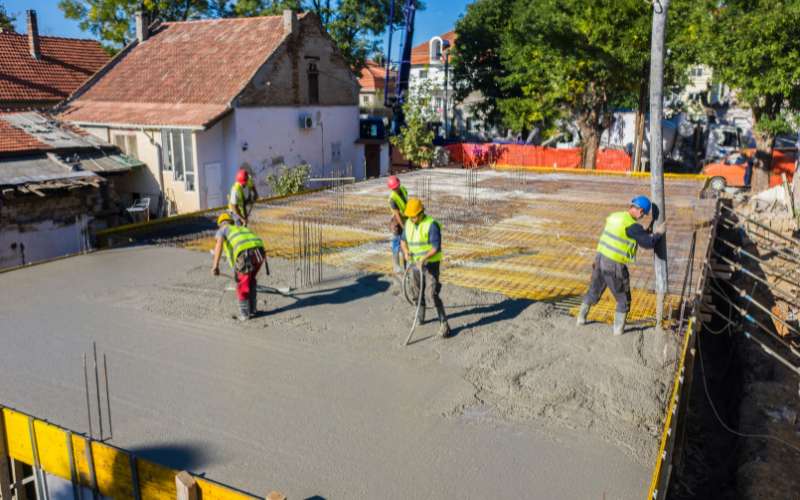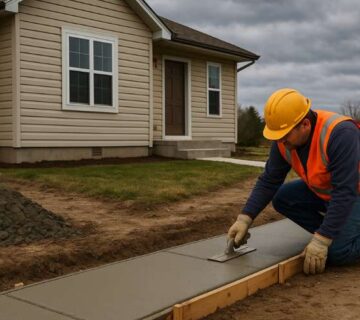The Role of Concrete in Earthquake-Resistant Construction is crucial for modern buildings. Imagine living in an area prone to earthquakes—would you feel safe inside a weak structure? Engineers have found ways to strengthen buildings using advanced concrete techniques. Concrete, when reinforced, absorbs seismic forces and prevents structural collapse. In this blog, we explore why concrete is the top choice for earthquake-resistant buildings. Learn how it enhances safety, reduces damage, and protects lives.
How Concrete Strengthens Buildings Against Earthquakes
Earthquakes cause massive destruction, but strong buildings can save lives. The Role of Concrete in Earthquake-Resistant Construction is vital because it provides stability and durability. Engineers and architects use advanced techniques to ensure buildings withstand seismic forces. Below, we explore why concrete is essential in earthquake-resistant structures.
Why Concrete is Ideal for Earthquake-Resistant Buildings
Concrete has unique properties that make it the best material for seismic-resistant structures:
- Strength and Durability – Reinforced concrete can endure extreme forces, preventing structural failure.
- Flexibility with Reinforcement – When combined with steel, concrete can resist bending and cracking.
- Fire and Weather Resistance – Unlike wood, concrete does not burn or deteriorate easily.
- Low Maintenance – It remains strong for decades, reducing repair costs.
How Reinforced Concrete Enhances Earthquake Safety
Buildings in earthquake-prone areas must be designed to handle seismic forces. Reinforced concrete helps in the following ways:
- Absorbs Shock Waves – Concrete absorbs vibrations, reducing damage.
- Prevents Sudden Collapse – Reinforcement prevents weak points in the structure.
- Ensures Stability – Properly designed concrete foundations keep buildings steady.
Important Techniques in Earthquake-Resistant Concrete Design
Experts use specialized techniques to strengthen concrete buildings against earthquakes. Here are some key methods:
- Base Isolation – This technique allows the structure to move with seismic waves instead of resisting them.
- Shear Walls – These reinforced walls help distribute earthquake forces evenly.
- Cross-Bracing – This technique reinforces walls and prevents lateral movement.
- Damping Systems – Special shock absorbers reduce shaking intensity.
Case Studies: Concrete Buildings That Withstood Earthquakes
Several buildings worldwide have proven that concrete is reliable in seismic regions:
- Taipei 101 (Taiwan) – This skyscraper uses a massive tuned mass damper to resist earthquakes.
- Sabiha Gökçen Airport (Turkey) – Built with base isolators, it remained intact during earthquakes.
- Los Angeles City Hall (USA) – Retrofitted with reinforced concrete, it now resists seismic activity.
Steps to Improve Concrete Earthquake Resistance in Your Building
If you plan to build or upgrade a structure, follow these steps:
- Use High-Quality Concrete – Stronger mixtures provide better resistance.
- Reinforce with Steel – Steel bars enhance flexibility and strength.
- Install Shear Walls – These add extra support against seismic movement.
- Ensure Proper Foundation – A strong base prevents collapse.
- Follow Local Seismic Codes – Compliance with regulations ensures safety.
The Future of Earthquake-Resistant Concrete Construction
Technology is improving, and new materials are emerging:
- Self-Healing Concrete – This innovative material repairs cracks on its own.
- Ultra-High-Performance Concrete (UHPC) – This advanced mix offers greater durability.
- 3D-Printed Concrete Structures – These allow faster, more precise construction.
Engineers continue to develop solutions that make concrete buildings even safer during earthquakes.
Building a Safer Future with Earthquake-Resistant Concrete
Concrete plays a vital role in protecting structures from earthquakes. Using advanced techniques like reinforcement, base isolation, and shear walls ensures buildings remain strong. If you’re planning a construction project in a seismic zone, choose earthquake-resistant concrete solutions. Contact us today to learn how we can help make your building safer and more durable.





No comment